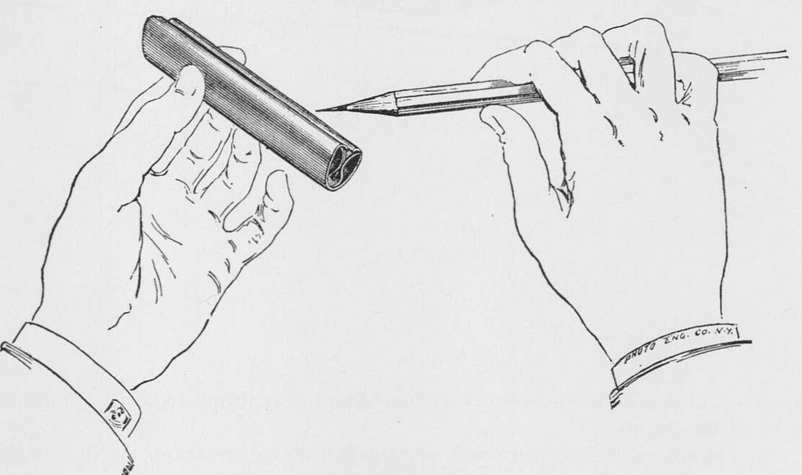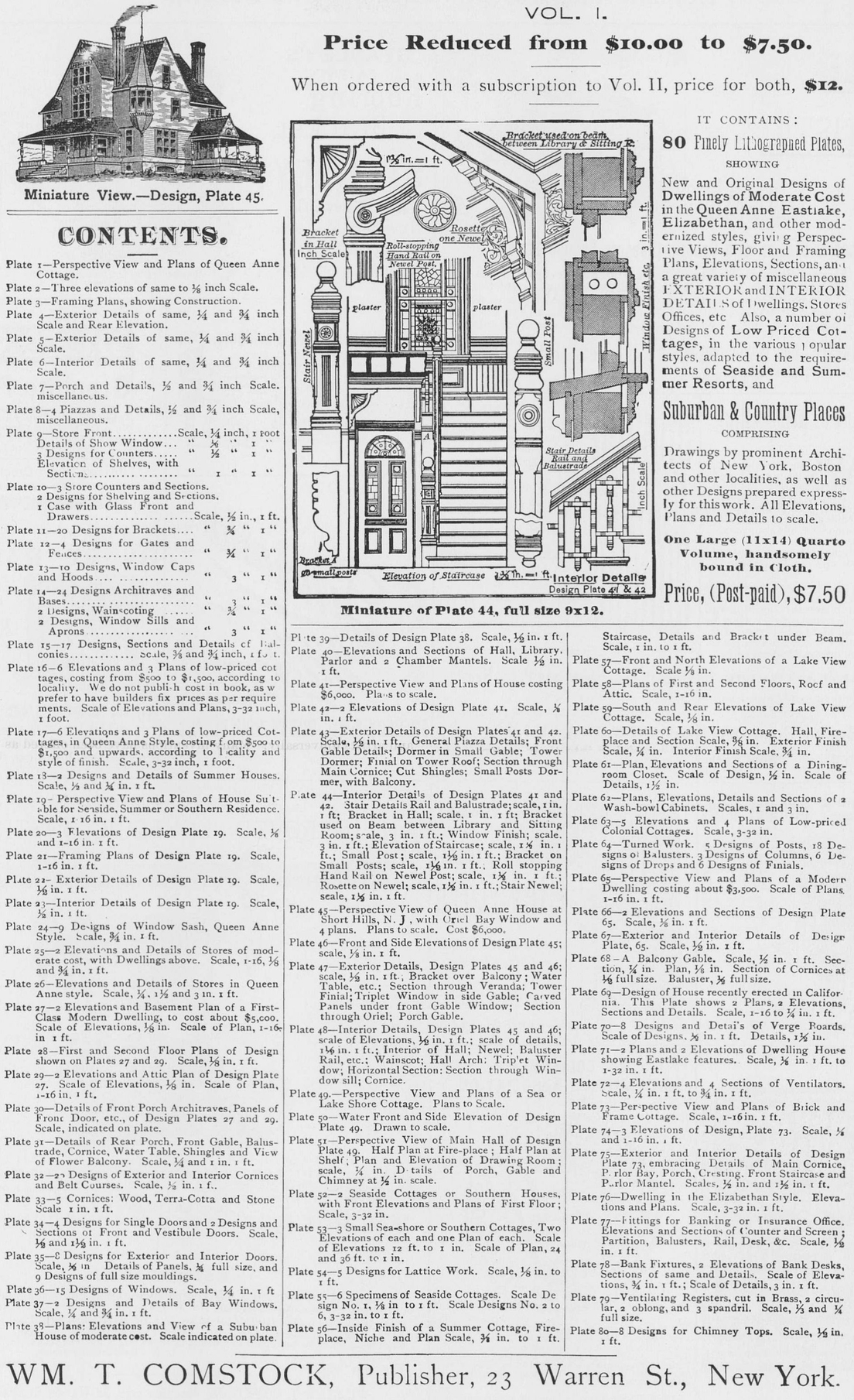VOL. II.
MARCH, 1889.
No. 6.
A New Planer and Matcher.
THE accompanying illustration is of a new machine made by C. B. Rogers & Co., of Norwich, Conn., whose warerooms are at 109 Liberty street, this city.
This single surface is entirely new in design, and very convenient in all its adjustments ; is easily operated, and is an excellent machine for general shop work. It works 24 inches wide and up to 6 inches thick.
The cylinder is made from a solid steel forging, is double or single belted, and runs in self-oiling boxes.
The feed rolls are large, and in double-belted machines are geared both top and bottom, making very strong feed. Three changes of feed are provided for by means of cone pulleys on the feed counters, the changes being effected by simply shifting the belt on the cones.
Especial attention is called to the advantages of a quick and an easy change of speed on machines of this class in every shop where both hard and soft wood are used, and where the quality of work done is required to be of a high standard of excellence.

The cylinder and feed-roll boxes are made fast to the frame of the machine, and by means of the hand-wheel at the side the bed is raised and lowered for different thickness of stock. This arrangement gives good solid foundations for the working parts of the machine. All of the pressures, chip breaker and adjustments are perfect.
This planer is built single-belted with friction lower rolls; double-belted with geared lower-rolls, with or without matcher as desired.
Pulleys on the cylinder are 4 -inch diameter, 4
-inch diameter, 4 -inch face, and should make 4,000 revolutions per minute. The machine weighs 1,800 pounds as surfacer and 2,300 pounds as matcher, and takes 2 or 3 horse-power to drive it.
-inch face, and should make 4,000 revolutions per minute. The machine weighs 1,800 pounds as surfacer and 2,300 pounds as matcher, and takes 2 or 3 horse-power to drive it.
Persons intending to fit up wood-working establishments will do well to correspond with the manufacturers, who make a large line of wood-working machinery.
The Frink Reflectors.
WRITERS and speakers often refer to the dark ages, speaking of the periods of intellectual darkness. But if we would refer to the dark ages in a stricter sense, referring to the period when the only means of illumination was the flicker of the candle or the pine knot, we should not have to go far back in the history of the race. The early years of this century had but little means of brilliantly lighting the interiors of churches, halls or dwellings. Gas is a comparatively modern invention, and the use of kerosene is so recent that most persons in middle life can remember its first introduction, and the electric light has only just come among us, so that in fact we have but just emerged from a period of actual darkness. With the invention and introduction of the means of brilliantly lighting has also come further invention in furtherance of its purpose, both in the methods of producing and diffusing light. To the latter we wish in this case to refer. For this purpose reflectors of various designs and patterns have been used, from the simple tin reflector of the ordinary lantern up to the most elaborate glass reflector. An example of the growth of invention in this direction is shown in the accompanying illustrations. The examples here given are furnished us by Mr. I. P. Frink, of 551 Pearl street, this city, manufacturer of the great church light, and represent the result of thirty years’ experience and thought in their manufacture. Their purpose is to use the light produced by the consumption of gas or oil as the case may be to the best advantage, and to so distribute it in the audience hall of church, theatre or public hall as to furnish the light where required by the audience. In the construction of these chandelier reflectors silver-plated corrugated glass is used, which secures great reflecting power as well as durability. The same materials are also used by this manufacturer in the manufacture of special reflectors for picture galleries. For the exhibition of large and important pictures the Frink reflectors have been found well adapted, and many of the noted pictures lately exhibited in this city have been lighted by these reflectors. In adapting these to special purposes special designs are often required, and to this branch of their business particular attention is given, and manufacturers also supply extra parts to order (see Fig. 3), by which hollows the long experience of this house in lighting all classes of public buildings and rounds can be worked of the ordinary sizes. This tool is known in market as enable them to meet the requirements of any particular case. Their church Plane No. 45, manufactured by the Stanley Rule and Level Company, New lights may be found in all parts of the country, and to the universal satisfaction of those employing them, as may be gathered from the testimonials of clergymen, church committees and others connected with the buildings in which they are used. Those interested in examining into their system of reflectors will be supplied with circulars and testimonials, as well as an illus trated price list on application.


Combination Tools.
ONLY such carpenters as are watching for improvements in tools that are used in their craft can be aware of the changes that are being made in this direction. Not that every change is necessarily an improvement, but an occasional advantage accrues to the workman in all the efforts that are being made to produce better tools for their uses.

FIG. 1.
A notable instance of an improved tool is that of Stanley’s Beading, Rabbet, Slitting and Matching Plane, illustrated on this page, in which a successful combination is made of all the tools indicated in its name. Samples of the eighteen cutters, bits, etc., that accompany the tool are shown in Fig. 2. The Britain, Conn., who will mail a full description to mechanics who send their address, or the tool can be found at every hardware store.

The Duplex Pencil Pointer.
MESSRS. KOLISH & CO. are introducing a new pencil pointer of which the accompanying cut shows it in operation. The evident practicability of this little implement is seen at a glance, and will be appreciated by draftsmen and artists universally. Many inventions have been offered as pencil pointers or sharpeners, and yet after trial almost every one has come back to the penknife and emery pad as the only feasible method for practical use. The devise here presented is so evidently practical, yet so simple in its construction, that its presentation alone carries conviction. The manufacturers state that the emery cloth, which forms the abrading surfaces, will last for months, but if worn may he replaced by pushing out the inside holder, in which a new sheet can be easily inserted.

The “Duplex” Pencil Pointer.
To give the pencil a flat edge, press the point lightly in the groove of the sharpener and draw lengthwise from end to end, or if a round point is required roll the pencil between the thumb and fingers as shown in cut, taking care not to grind away the point.
The outside casing of the Duplex Pencil Pointer which is nickel plated is not larger than an ordinary pocket knife and convenient to carry in the pocket. It is a simple and cheap device, only costing 25 cents, and we have no doubt the manufacturer will find a large call for it. This little device is but a single item in the business of Messrs. Kolish & Co.. who are manufacturers and importers of drawing instruments and materials, and carry at their store, 155 Fulton street, a full line of architects and engineers supplies.


